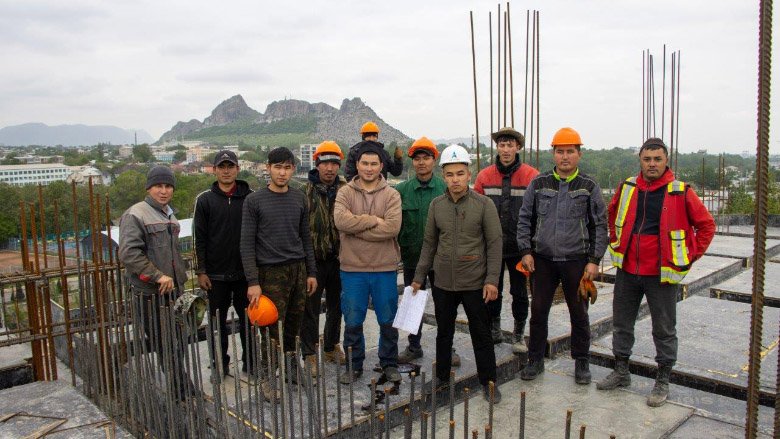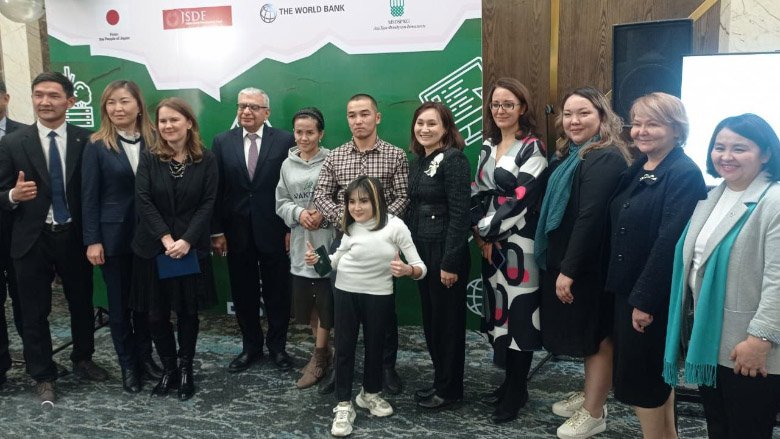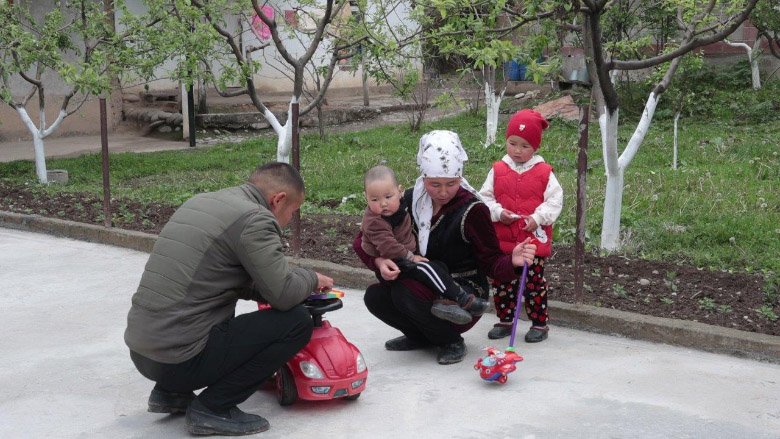Kutman Mahamatkursan uulu is one of the youngest housing foremen in the Kyrgyz Republic. The 29-year-old entrepreneur is the owner of his own business. He has come a long way from being a labor migrant just a couple of years ago to an entrepreneur today.
“I used to be a migrant worker in Russia, where I started as a simple worker at a construction site. Then I was promoted and worked in the front office of the construction company when the COVID-19 pandemic happened, and we faced major difficulties with work all around,” Kutman says.
He decided to return to his homeland, a small village in the south of the Kyrgyz Republic. There he struggled with finding a permanent well-paying job.
| Finding a job in the Kyrgyz Republic for returning migrants is a challenge due to the surplus of labor and the impact of the COVID-19 pandemic. The Kyrgyz Republic is a young country, which needs higher and more inclusive economic growth to absorb the rapidly growing labor force and address unemployment. According to the Ministry of Labor, Social Security and Migration of the Kyrgyz Republic, over 1.5 million of the country's population of seven million are work migrants. The Cabinet of Ministers of the Kyrgyz Republic and development partners have identified creating more job opportunities, particularly in the private sector, as a priority. Policymakers need to guide the transformation of the economy from an over reliance on remittances and aid to private sector-led growth underpinned by investment and exports. |
Kutman recalls how one day on social media he came across information about the Livelihoods for Youth (L4Y) Community Support Project (L4YCSP). He signed up for training courses and became one of the 15 finalists out of over 150 applicants.
“Due to COVID-19, the trainings were held online. After the lockdown was lifted, we received face-to-face trainings on the foundations of entrepreneurship,” Kutman recalls. He is also grateful for the opportunity for an internship: he chose a familiar field and joined a construction team.
| The trainings provided to Kutman were part of the Livelihoods for Youth (L4Y) Community Support Project (L4YCSP) — made possible with the financial support from the Japan Social Development Fund — a benefit sharing program under the Community Support Program of the Central Asia South Asia Electricity Transmission and Trade Project (CASA-1000). L4YCSP, administered by the World Bank and implemented by the Aga Khan Foundation, supported innovative livelihoods development and the employability of young women and men in communities located along the CASA-1000 transmission line in order to improve socioeconomic opportunities and inclusion. The Japanese grant financed small social and economic infrastructure investments in these communities, as well as capacity building and technical support to youth and youth-led enterprises. |
From Intern to Entrepreneur
“During the internship on a construction team, an idea suddenly flashed through my mind. Why don’t I create a crew of my own? Don’t I have every opportunity?” Kutman stresses that the trainings and the internship boosted his confidence. He began to gather his own team, talking to other guys from his village who had also recently returned from Russia. “I started telling them that here we can start our own business. This is the same thing that we did in Russia: we have done it before under someone’s direction there, and we can do it now by ourselves,” Kutman says.
With a few more workers, Kutman got his first contract for building a small house. Then he set up a company, which now employs 25 people. Recently, Kutman’s company has been selected as subcontractor at a construction site of a multi-story residential building in the very center of Osh. This is a huge success for a young entrepreneur.
“Under the CASA-1000 Community Support Project, it was the Aga Khan Foundation and the World Bank that empowered me to become an entrepreneur and foreman. Thanks to the project I learned how to start a business, how to communicate with people, and how to build a team. I will not be mistaken to say that thanks to the project I was able to become an entrepreneur and foreman.”
Kutman is making plans to expand his business. From being a subcontractor, he aspires to take responsibility for all stages of construction. As his business expands, Kutman is pleased to be able to provide more jobs for other former fellow migrants who have returned home from Russia.
Kutman’s parents also take great pride in their son’s success. “As a mother, I am so happy that he returned home from Russia. He is near his own family and children now. He has a business, and he is able to employ other people from the village,” says Chynara, Kutman’s mother. “Moreover, Kutman is helping put his younger siblings through college. He has become a great support to our big family!”
Kutman’s story demonstrates how creating opportunities for youth — in education, training, and employment — empowers them to reach their full potential. That is essential for driving forward economic growth in the Kyrgyz Republic and beyond.




